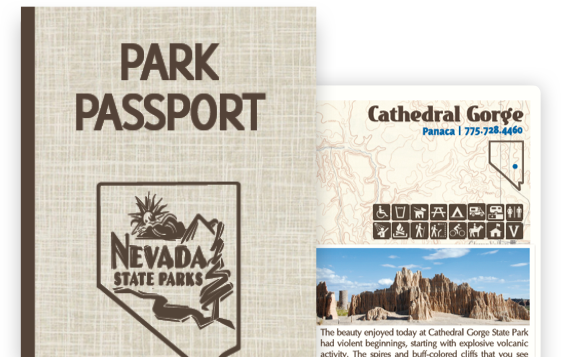History of Elgin Schoolhouse State Historic Park
Several generations of school children were educated in this little building, which covered grades one through eight, from 1922 through 1967. The one-room schoolhouse at Elgin in eastern Nevada was built by Rueben Bradshaw, whose father, James Bradshaw, homesteaded a ranch in 1880 at the lower end of Rainbow Canyon.
During the 1870s, a number of ranches were settled along the Meadow Valley Wash, which flowed all the way to Moapa, where it joined with the water from Warm Springs and formed the Muddy River.
There were never any large numbers of children in the area until the Salt Lake, San Pedro and Los Angeles Railroad was built through Rainbow Canyon in 1903. At that time, small communities arose every five miles, where there was a “siding” – a stop for trains and passengers. At some of the larger sidings, a small depot was built where passengers could board or leave the train, or get a hot meal.
Panaca, about 36 miles north of Elgin, had the closest school to the Rainbow Canyon ranches. With only wagons for transportation, many of the ranches were too far away from Panaca for children to be hauled to school each day. Consequently, children were home-schooled at individual ranches or taken to a neighboring ranch to be home-schooled. In 1890, the “Bullionville” school district was established and a schoolhouse was built five miles below Kershaw Canyon. Even this schoolhouse was too far for wagons from the lower end of Rainbow Canyon, and residents petitioned for many years for another school district that would provide for a teacher – if not a building.
In 1905 the first school was built in Caliente, north of Elgin, and the Meadow Valley District was established. It would still be a few years before a building was provided, so students met in an outbuilding on a ranch. In 1921, Lincoln County had funds for a schoolhouse at Elgin. James Bradshaw donated seven acres of his ranch in Meadow Valley for the building. His son Rueben built the schoolhouse, which was completed in 1922. Two years later, an addition to the building provided a small apartment for the teacher since there was no housing available at the siding. After this, finding teachers was never a problem, since the teacher was paid well and housing was provided – but every few years a new teacher would have to be recruited since the young female teachers often married local ranchers’ sons.
The last year the school house was used was 1967, when the final student reached 8th grade. By that year, school buses were picking up children and transporting them to schools in Caliente and Panaca. The building reverted to private ownership and became a personal residence for a Bradshaw family member.
After the family member moved out in the 1980s, the building stood vacant for many years. In 1998, family members pooled resources and the building was restored to its original appearance. The Bradshaw family offered it to the Nevada Division of State Parks in 2005, and the State Legislature approved its acquisition. It became a State Historic Site in July 2005.



